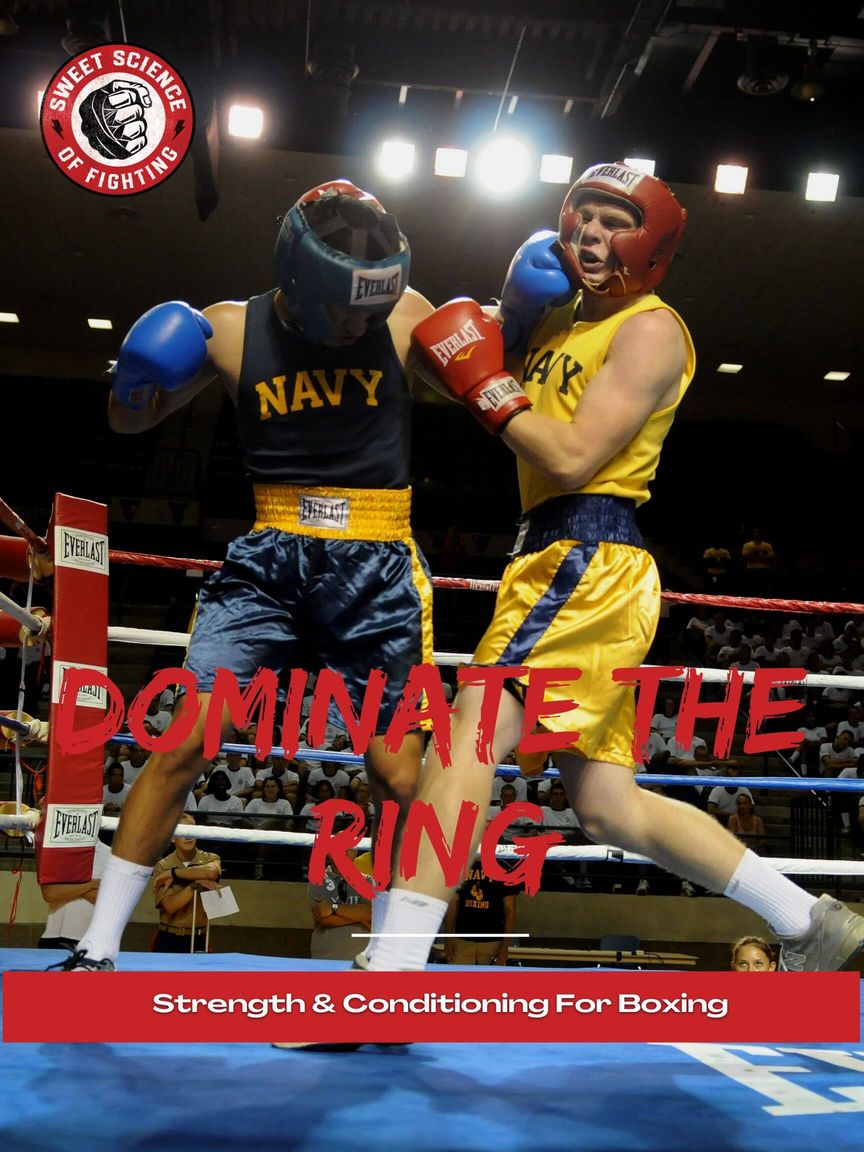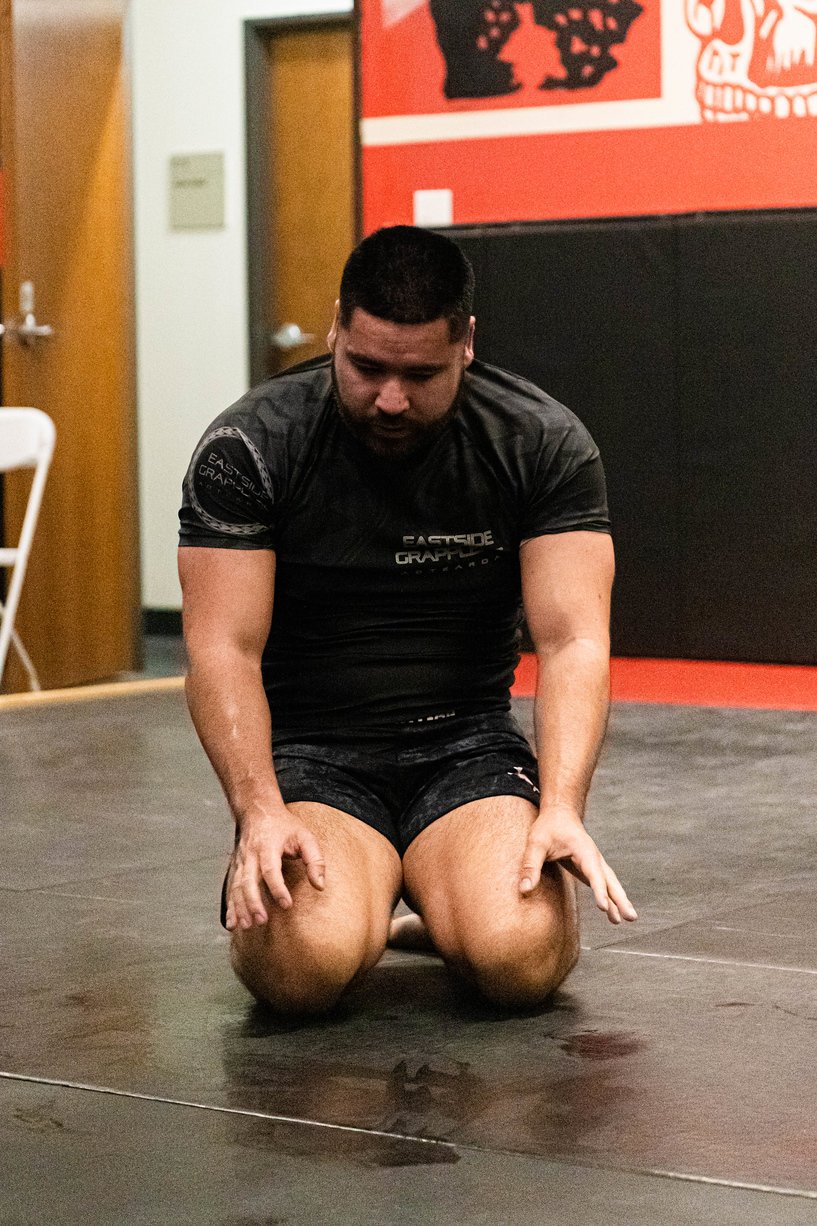Boxing and karate are worlds apart in almost many aspects, but both are martial arts created for fighting. So, it’s natural to wonder which will win in a direct fight between them. Not only that but boxing and karate are two of the most popular martial arts on the planet and are practiced by millions of people.
To answer which will win, we will have to dig deeper and dissect the matter from different aspects.
A master boxer will beat a master karate practitioner. Boxers spar often and have mastered the art of doing damage with their hands. Most modern karate is point fighting with no full contact sparring.
Or at least that is what the overwhelming video and practical evidence show. But the topic is too broad to be encapsulated in a single sentence. So I’ll dive deeper into the subject and see what both martial arts bring to the “arena” and help you decide which is better for you.
What Is Boxing?
Boxing is a form of combat (known as the Sweet Science) that allows striking only with the fists to all targets from the waist up. Boxing is one of the oldest martial arts, and the earliest found records of fist fighting date from around 3000 BC Egypt.

FREE Strength & Conditioning Program To Never Gas Out In The Ring
Fist fighting has also been an important part of the ancient Olympics. However, these were much more brutal forms of fighting, and modern-day boxing was developed in England in the 1700s. It then evolved into its current form in 1867. Many of the rules still used to this day were published with the patronage of the Marquess of Queensbury.
Boxing matches are contested in 3-minute rounds with 1-minute rests in between. The purpose is to debilitate the opponent to a point where he can’t continue. If this doesn’t happen, the judges decide the winner based on several factors, like the number of punches landed, damage dealt, aggression, etc.
As a pure sport, boxing has no wider philosophy, and its goal is winning matches inside its specific ruleset. The sport’s full-contact fights and highly competitive nature make it very applicable in real-life situations because it conditions the practitioners to stress and violent situations.
What Is Karate?
Karate is a system that was created for self-defense when weapons were banned in 17th century Japan. Karate has deep roots in Chinese martial arts. Still, it evolved into its own art on the Japanese island of Okinawa before moving to mainland Japan in the early 20th century.
Today it’s one of the most widely known and practiced martial arts all across the globe. Describing karate is a lot more complex than boxing because many styles differ significantly from one another.
But their shared root is that karate should be a complete system with strikes, joint locks, takedowns, weapons, and grappling submissions. Its original purpose was to develop the mind, spirit, and body while equipping you with the tools to defend yourself from attackers effectively. Not fight one on one with other martial artists.
Today many karate styles have sports competitions with a wide variety of rules. The most popular styles like Shotokan karate moved away from full contact contests and opted for point fighting. This, unfortunately, is very different from actual combat.
For the sake of further discussion, we will continue looking into karate in comparison to boxing only when the Japanese arts are trained the traditional way with combat in mind. This means it needs to be practiced against resisting and unwilling partners and regular live sparring.
Otherwise, it’s safe to say that a boxer will annihilate a karateka every time. Especially if the karateka has trained his art doing only kata and preparing for point-scoring competitions.
Key Differences Between Boxing and Karate
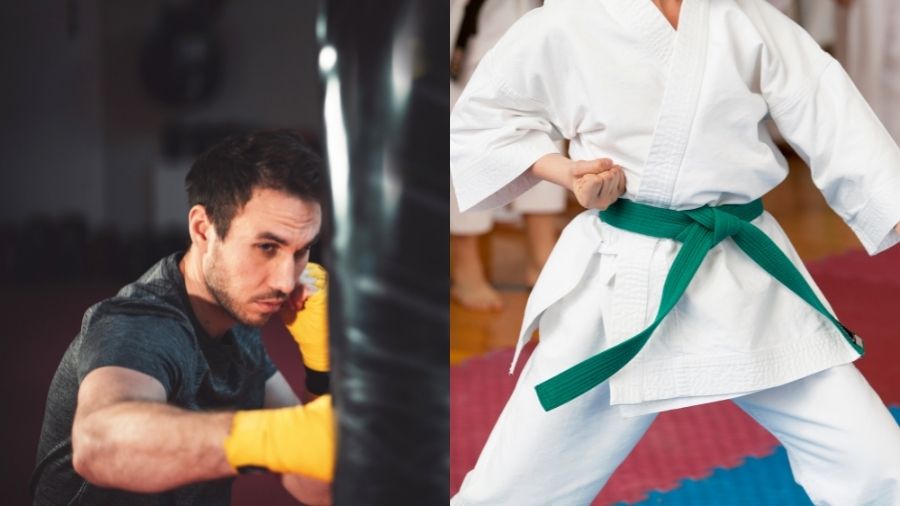
It’s time to look at some of the key differences between boxing and karate in a few important categories.
Rules
Boxing rules are uniform all across countries and organizations. There are two main types of boxing- amateur and professional. Still, the main difference in the rules is that professional boxing bouts are fought in more rounds.
Amateur rulesets have changed over the years. Today, they are much closer to professional rules, which was not the case long ago. There are some other subtle differences, but they are beyond the scope of this article.
Boxing rounds are 3 minutes long, and matches are fought in a square ring. Only punches with the front part of the glove are allowed. You can target the body and head above the belt, but the kidneys and back of the head are prohibited. The goal is to either hurt your opponent so he can’t continue or convince the judges that you won based on a few criteria.
Karate has dozens of different styles, each with its own rules. The two main branches are Shotokan and knockdown karate like Kyokushin. The first focuses on point fighting and awards precision and speed. No hard strikes are allowed, and the bout is stopped each time someone scores a clean hit. This resembles fencing more than it does boxing or MMA.
Knockdown rules allow full contact strikes, and the fighters’ goal is to knock down the opponent. No protective gear is used, but punches are only allowed to the body. This creates a very close-range violent combat.
Kicks are allowed everywhere, and a knockout is the desired outcome. All karate matches, regardless of rules, are contested in an open space with boundaries called a tatami.
Equipment
Boxing is always done with special boxing gloves. The other mandatory protective gear Is the mouthpiece and groin protection. Special boxing shoes are also required for competition, but the rules are not very strict. However, in the gym, you can train in any sports clothes and shoes. The only thing you need is a pair of gloves and a mouthpiece.
Karate is always practiced in a traditional Japanese uniform called a gi or a kimono. Different karate styles do competitions with different gear- helmets, breast protection, karate gloves, etc.
The only mandatory gear piece is always the gi and the belt that holds it together. I’m sure you are all familiar with the colored belts in traditional martial arts- they signify progression and hierarchy and are usually earned via a hard test.
Techniques
Boxing techniques are pretty simple. You have straight punches, hooks, uppercuts, in-between variations, and hybrid punches. This is why a great emphasis in boxing is put on footwork, distance management, and body and head movement for defense.
Despite the seemingly minimal arsenal in boxing, all the moves are highly nuanced. The masters of the sport produce some breathtaking displays of precision, agility, and power.
Traditional karate is designed to encompass everything you can need in a fight. There are punches, strikes with every part of the hand and arm, kicks, knees, joint locks, throws and trips taken from judo and jiu-jitsu, and much more.
But modern-day karate is predominantly known as striking. Again, different karate styles focus more on other techniques. The vast array of techniques in karate means that a karateka will have a more diverse arsenal but will never take any of them to complete mastery as boxers do.
Stance and Footwork
Karate has various stances used in technique training (kata and Kihon). Still, the fighting stance is usually more sideways to better facilitate fast linear movement and strong kicks.
Usually, the stance is narrower than a karate stance. Still, different boxers have different physiques and styles, so you can see many different stance variations.
Philosophy
One of the most significant differences between boxing and karate is the philosophy of both. Boxing is a pure sport, and all efforts go towards learning how to win inside the rules.
It will be unfair to say that training does not develop mental strength, comradery with the training partners in the gym, discipline, humility, and respect. It does a great job with the right trainer and gym, but these things are not inherently built into the sport.
On the other hand, Karate has a philosophy that is as important to the practice as physical training. It’s a complete lifestyle that promotes spiritual development and a holistic approach to life.
There is a special code of conduct in the dojo, a ranking, and a hierarchical system. Time is spent doing breathing exercises and meditation. These things still bring many devoted practitioners to karate, despite the visible practical superiority of modern martial arts in an actual combat setting.
Strength & Conditioning
Both boxing and karate require reactivity and agility with rapid movements. Boxing strength training is rooted in tradition with many fighters opting to not lift weights at all in favor of calisthenics. However, strength training and karate are often never used in the same sentence.
Both martial arts benefit from similar strength training routines focused on lower and upper body explosive power development through various jumps and throws.
Boxing conditioning is seen as doing more roadwork. Conditioning for karate doesn’t fall too far from this line of thinking.
But there are better ways in my experience than performing roadwork that is more specific to boxing such as shadowboxing and various circuits. Due to the wide array of techniques karateka need to practice, their conditioning is best served on the mats. For example, Mona Pretorius only performed katas (along side kumite training) at various intensities to win six kumite World Championships.
Boxers are fitter than karate practitioners as they have VO2max levels closer to elite triathletes while having an average activity to break ratio of 9:1. On the other hand, karate has an activity to break ratio of 2:1 on average due to a large number of referee stoppages.
Boxing vs. Karate For Self Defense
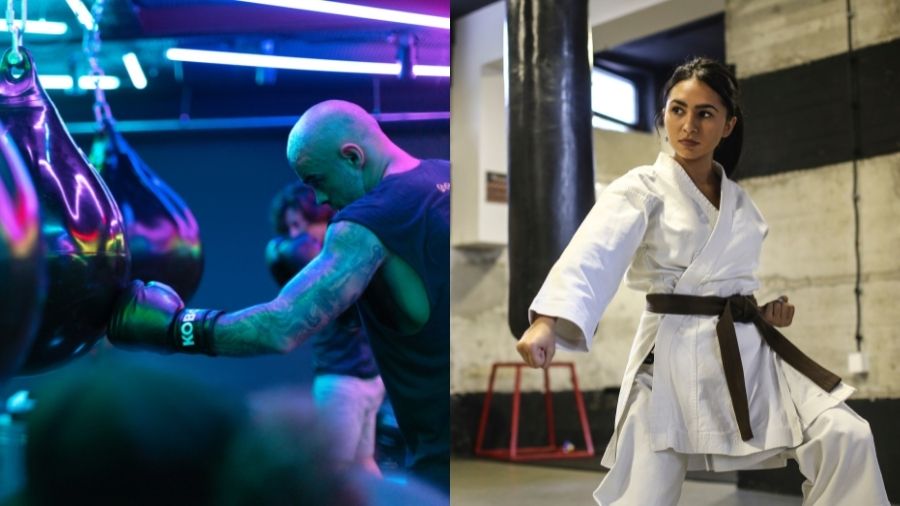
Traditional karate is, in essence, self-defense, and if it’s trained with this intention can be very effective.
But if I can summarize in a sentence, traditional karate practiced against resisting opponents and sparring is good for self-defense. In contrast, sports karate is terrible for self-defense.
The primary purpose of boxing is to knock out your opponent with punches, which is an excellent base for actual fighting. Although a boxer has a very limited arsenal of techniques, the ability to move quickly, punch with real power, and be accustomed to stressful and violent situations make them very dangerous in a real fight.
Boxing vs. Karate For MMA
Both disciplines require adjustments to work in MMA. There are plenty of fighters from both domains that have successfully transitioned to the cage and used their base skills. In the dawn of MMA, karate fared tragically in the octagon, and people thought it had no value.
But then, fighters like Lyoto Machida, Stephen Thompson, and GSP reaped tremendous success using traditional karate stances and techniques.
Early pure boxers also failed spectacularly in cross-style fights in MMA and kickboxing. Still, fighters like Petr Yan, Rob Font, and Calvin Kattar destroy the opposition with style based primarily on boxing.
It’s hard to give any of the two disciplines a clear advantage in its effectiveness in MMA. It’s more a matter of which fighter will translate his skills and mold them better for the sport of MMA.
Is Karate Safer Than Boxing?
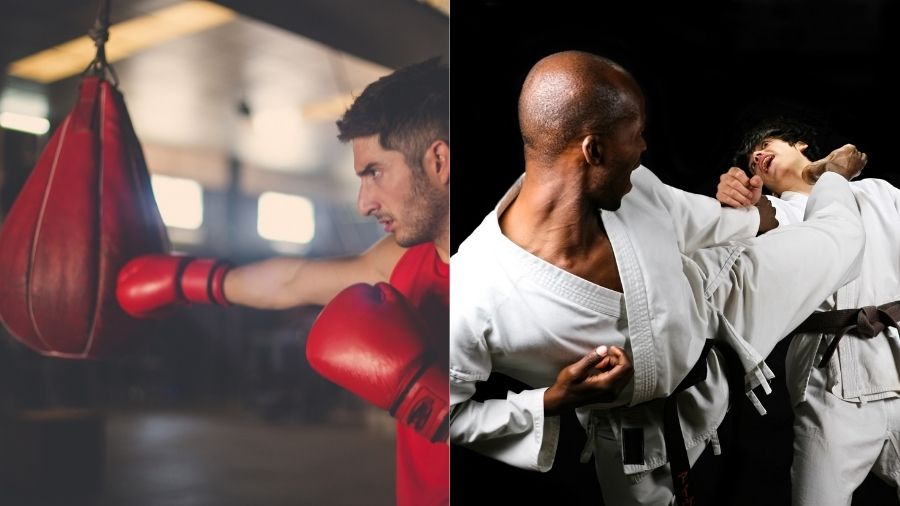
Repeated head trauma is one of the main drawbacks of boxing. You can train more casually and use headgear, big gloves, and spar more lightly. But if you plan on competing, getting some hard knocks to the head is inevitable.
There are many extensive pieces of research on brain damage, so you might want to read a bit and evaluate the risks yourself before taking up boxing seriously.
Karate will surely get you plenty of bruises, sprains, and strains, but it is generally safer than boxing. A lot less time is spent sparring and fighting and more on technique training and other types of exercises. Karate is safer and will spare you blows to the head from that perspective. Still, if you aim to become a formidable fighter, boxing will likely do a better job.
Boxing vs. Karate: Who Would Win?
It’s easy to open YouTube and type boxing vs. karate and watch many examples. The common pattern you will find is boxers knocking out karatekas. Then again, most of these guys do not train karate with the intention of full-contact fighting, and when the moment comes, they feel overwhelmed.
A fight on the street with no rules is different from a regulated contest with gloves and regulations. If a karate practitioner is trained to use his art in self-defense, he may overcome a boxer using long kicks and hand strikes.
All these imaginary contests have too many variables. On top of that, a lot of it depends not only on the style but on the practitioner. Still, it’s always fun to entertain these hypothetical battles and dissect the advantages and disadvantages of different styles.
Boxing vs. Karate: Which Should You Learn?
Hopefully, you’ve come up with some conclusion in the boxing vs. karate debate. When choosing what to train, everyone should assess their own goals and what they want to get out of the martial art. Boxing and karate are very different, but both have a lot to offer. It all depends on what you are looking for.
Boxing is better for those who want to feel real hand-to-hand combat and master various punches. Karate is better for those who don’t want to participate in hard contact and want to experience a traditional martial art.
12 Weeks To Knockout Power!
Train like a professional boxer, develop knockout power, and dominate the ring!
